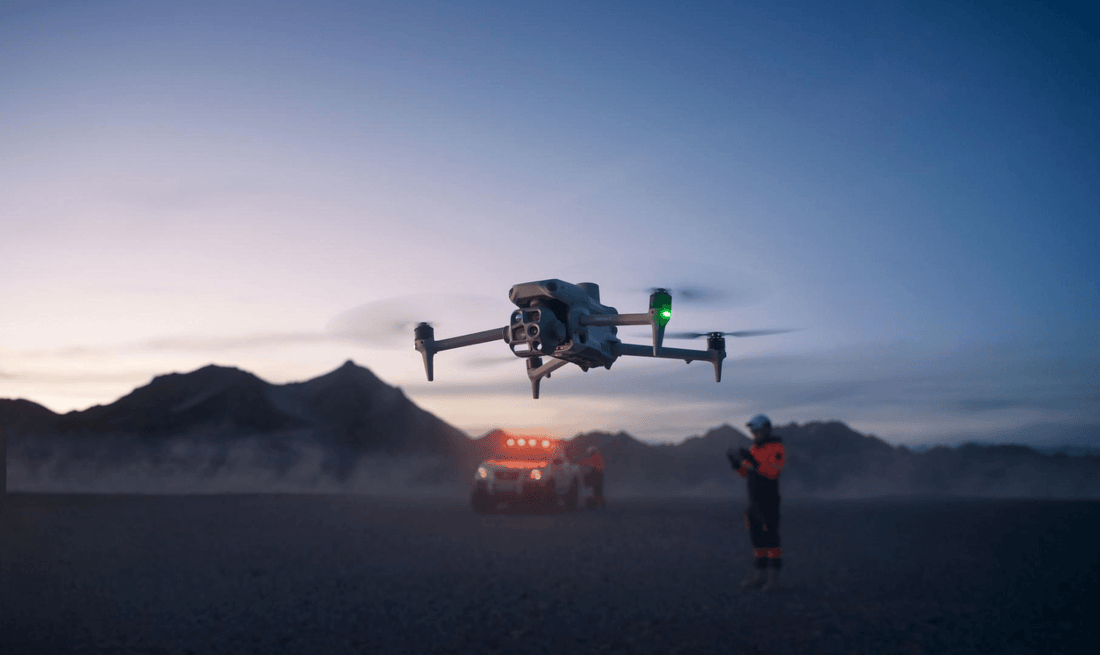
DJI Matrice 4T vs Matrice 4E: Which One Should You Really Get?
If you’re shopping for a drone that can handle serious work, chances are you’ve come across DJI’s new Matrice 4 Series. These drones aren’t weekend toys—they’re built for professionals who need reliability, long flight times, and powerful cameras.
But here’s the catch: you’ve got two main options—the Matrice 4E and the Matrice 4T. At first glance, they look almost the same, but in reality, they’re built for different jobs. Let’s break it down what sets them apart—and which one is right for your operations.

The Shared Foundation
Both the 4E and 4T come from the same DNA:
Foldable, portable design (easy to deploy in the field).
Up to ~49 minutes of flight time.
Omnidirectional obstacle sensing.
OcuSync Enterprise transmission system (long range + stable).
Compatibility with the DJI Dock 3 for automated deployments.
They’re both enterprise-grade tools, not consumer toys. The real difference lies in the camera payload.
DJI Matrice 4E: Efficiency First
The Matrice 4E is a cost-effective solution tailored for mapping, surveying, and inspection tasks where thermal data isn’t required.
Camera Setup:
Wide Camera: 20 MP 4/3 CMOS sensor (mechanical shutter, survey-grade accuracy).
Medium Tele: Useful for closer inspections.
Strengths:
High-resolution orthomosaic mapping.
Precision surveying with RTK support.
Lower entry cost compared to the 4T.
Best For:
Construction sites.
Urban planning.
Agriculture monitoring (visual spectrum only).
Surveyors and mapping companies seeking efficiency.
In short: the Matrice 4E is all about efficiency and affordability for daylight missions.

DJI Matrice 4T: Thermal Specialist
The Matrice 4T builds on the 4E’s platform but adds thermal imaging capabilities—making it indispensable for missions that go beyond daylight.
Camera Setup:
Wide Camera: 48 MP (1/1.3″ CMOS).
Medium Telephoto: For flexible zoom.
Telephoto Camera: 48 MP, long-range detail capture.
Thermal Camera: 640×512 resolution (High-Res mode up to 1280×1024).
Extra Features:
- NIR Night Vision with ~100 m range.
- Laser Rangefinder accurate up to 1,800 m.
Best For:
Search and rescue operations.
Firefighting (hotspot detection).
Law enforcement & security monitoring.
Wildlife protection & anti-poaching patrols.
Utility inspection (powerlines, pipelines, solar farms—especially at night).
The Matrice 4T is built for 24/7, all-weather, high-stakes missions where thermal awareness is critical.

Side-by-Side Quick Comparison
| Feature | Matrice 4E | Matrice 4T |
|---|---|---|
| Camera Payload | Wide + Medium Tele | Wide + Medium Tele + Telephoto + Thermal |
| Thermal Imaging | ❌ No | ✅ Yes (640×512, High-Res Mode) |
| Laser Rangefinder | ❌ No | ✅ Yes (up to 1.8 km) |
| Night Ops | Limited | ✅ NIR Night Vision (~100 m) |
| Primary Use | Mapping, Surveying, Inspection | Emergency, Security, Night Ops |
| Cost | Lower | Higher (but with thermal value) |

Which One Should You Choose?
Choose Matrice 4E if you’re:
✅ A surveyor, construction manager, or agriculture consultant.
✅ Focused on daylight mapping and cost-effective efficiency.
✅ Not in need of thermal or night vision.
Choose Matrice 4T if you’re:
✅ In public safety, firefighting, law enforcement, or SAR.
✅ Working in environments with night, heat, or hazardous conditions.
✅ Demanding a flexible “all-in-one” sensor platform for unpredictable missions.
Final Verdict
Both drones are rugged, smart, and built for enterprise use—but their missions diverge.
The Matrice 4E is the efficient workhorse for mapping and surveying.
The Matrice 4T is the multi-sensor specialist for critical operations where every second and every detail counts.
With DJI Dock compatibility and enterprise reliability, both represent the next step forward in aerial intelligence. The choice really comes down to one question: Do you need thermal?
